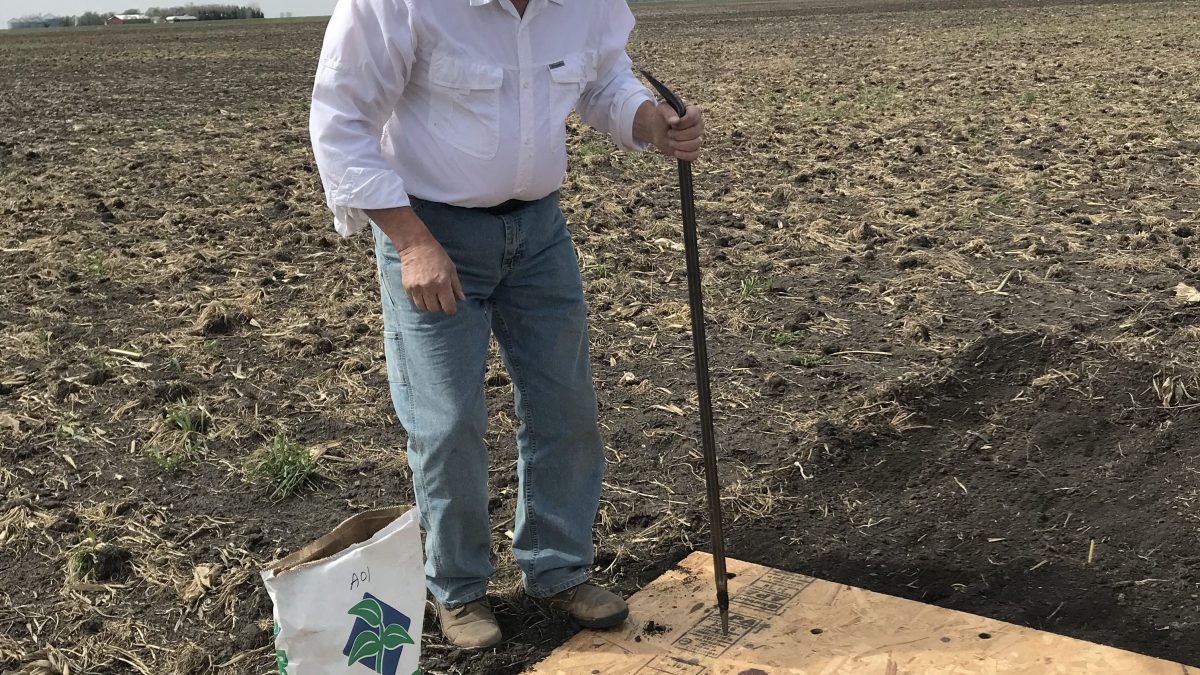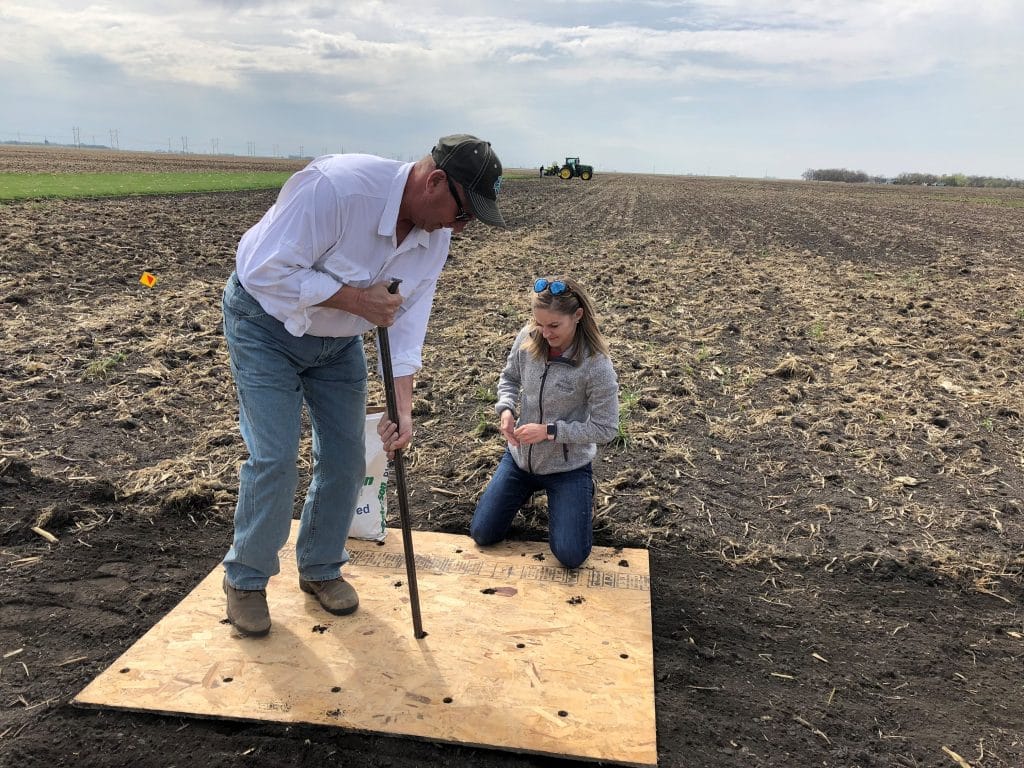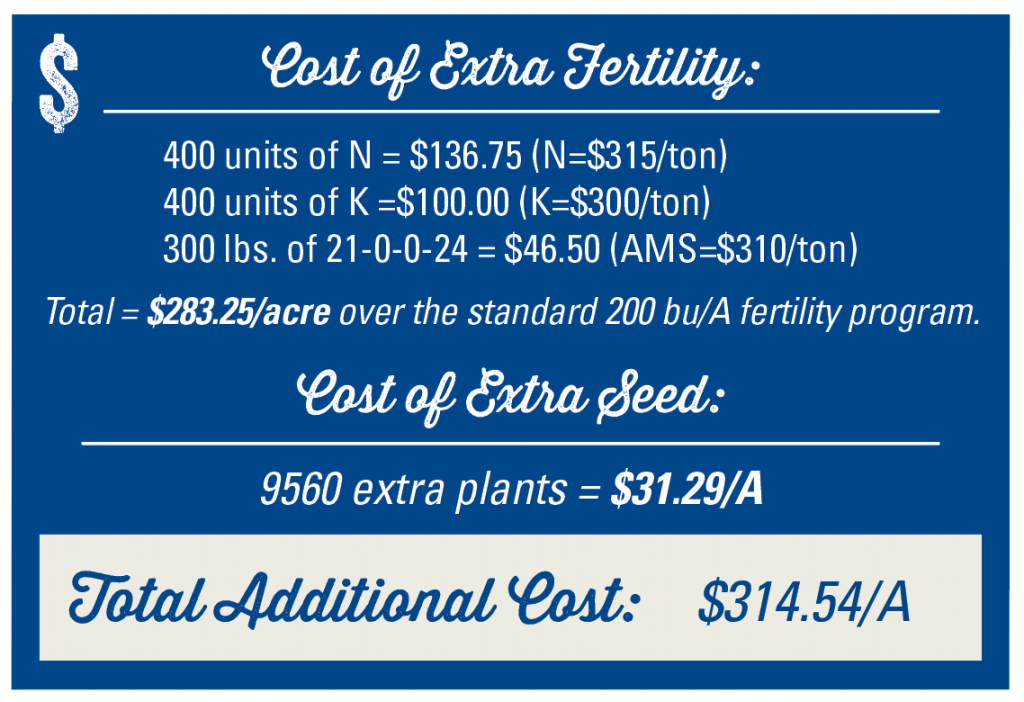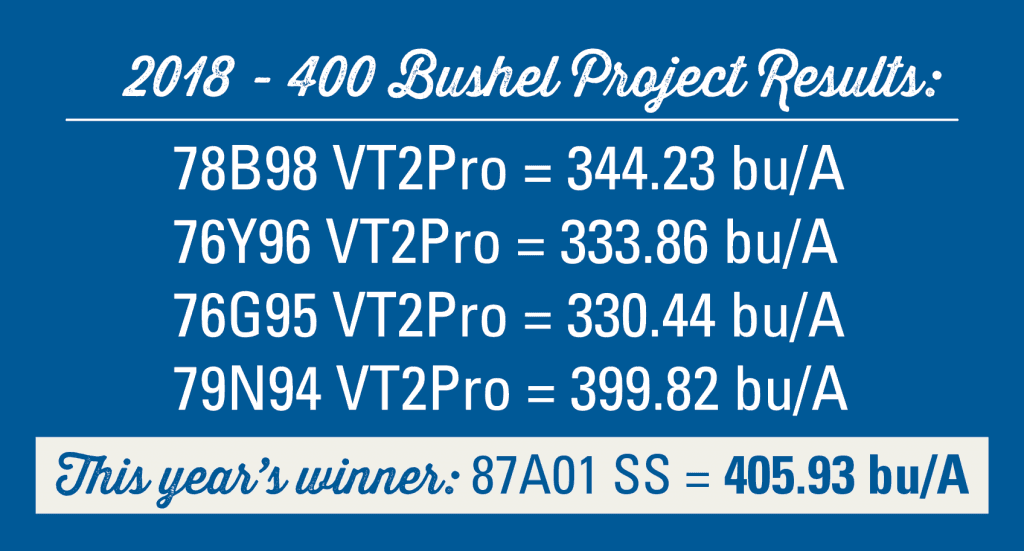Is 400 Bushel Corn Possible? This year’s research says, “Yes”!

If you’ve been following our blog for awhile you’re probably aware of an annual research/pet project our resident “corn whisperer”, Mike Larson conducts every growing season. The idea is ambitious but rooted in a simple question: Is 400 bushel corn attainable? If this is gibberish to you, check out some of our previous year’s reports:
The Corn Whisperer: Did Mike Achieve 400 Bushel Corn?
Striving Toward 400 Bushel Corn
Mike Larson’s 400 Bushel Project
This year marked the 6th year Mike has been conducting his experiment. We’ve seen mixed results over the years but we’re excited to say Mike was successful in 2018!
The Key Elements
Here’s how the experiment works:
- Mike chooses 5 hybrids from the Peterson Farms Seed lineup that are well matched for our local soils and have shown high yield potential.
- Corn is planted using a planter grid made out of a sheet of plywood to ensure uniformity. This year proved literally anyone can plant a good stand— even our marketing team.
- Crop is irrigated using a PVC pipe system and a 30-gallon poly drum. Interns babysit all summer making sure the crop gets the perfect amount of moisture.
- Corn is harvested and shelled by hand. (literally…again, thank you interns!)
Feeding the 400
To reach such a lofty goal these crops are carefully watched and babied. This year we fed and watered weekly from July 9-August 20th.
Of course, during this process, it’s worth noting the extra costs that are associated with these ‘unique methods’. See below for a breakdown of the additional costs incurred over the growing season (This example does not cover any of the application cost or labor).
After all of the time, care, and attention the moment of truth arrived. The rows were hand-harvested and hand-shelled and the year-end results were tallied and factored down to 14.5 moisture.
When taking the additional yield over the 200 bu/A field average multiplied by a current cash price of $3/bu and subtracting the additional out-of-pocket cost of the seed and fertilizer, the additional income of the winning hybrid, 87AO1, was calculated at $314.54/A.
This year wasn’t a cakewalk for Mike’s project. “We definitely saw a great stand early on but hail damage in early July had me worried. These hybrids proved tough though and I’m really pleased with the results.”
Mike thinks the ideal summer temperatures prior to July 4th and the weekly 1” watering by our interns is what got us to the finish line this year. He is also sure to point out that the uniform stand plays a huge factor in reaching a yield like this.
And now that he’s been repeatedly successful, we think it’s time he ups the ante. Can you say 500 bushel corn?
In all seriousness, Mike loves talking about anything involving corn, including his 400 bushel project so give him a call anytime!














